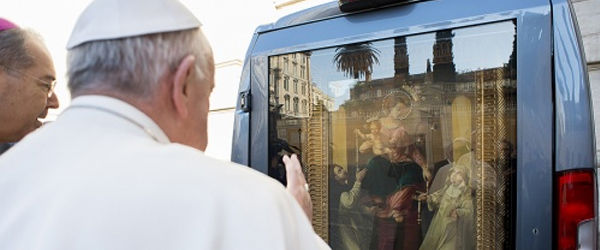Incremental increases to poverty reduction programs in Governor Jerry Brown’s $155 billion proposed budget for 2014-15 don’t begin to meet the cuts sustained during the state’s recent Great Recession, said the top official at the bishops’ California Catholic Conference.
Although an improving state economy is reflected in the proposed budget’s projected surplus of $5.6 billion, Brown’s plan focuses on fiscal restraint --- taking steps to pay down debt and provide for a rainy day fund --- with the bulk of the proposed general fund’s 8 percent increase this year going to schools.
“We’re supportive of the governor’s notion of fiscal responsibility and he did recognize the need to restore some cuts, although not at the level of full restoration of cuts to programs like TANF (Temporary Assistance for Needy Families),” said Edward “Ned” Dolejsi, executive director of the California Catholic Conference.
CCC officials will work with the governor and the state legislature during the next few months to address social issues in a manner that will allow all Californians to live in dignity and freedom, something that Pope Francis has repeatedly set as a minimum economic standard for any fiscal policy, notes Dolejsi.
“Our interest is in having a quality policy conversationabout what is a necessary level of funding and how best to spend those funds to assist folks out of poverty,” said Dolejsi. He added that the CCC would like to see more funding of local community agencies, such as Catholic Charities, which help people in their efforts to escape poverty.
Regarding Brown’s decision in his budget proposal to decline funding for universal preschool, something desired by legislators, Dolejsi stated: “We think it will be an interesting debate abouttransitional kindergarten since it could impact early childhood education and day care, the latter of which is sometimes a necessary help for those in the low wage work force.”
The CCC is interested in where the state is going to put child care funds. For example, said Dolejsi, providing child care funding for CalWORKs recipients seeking or holding employment “would have a higher priority for us.”
“Our focal point in discussing funding of human services,” he declared, “should be centered on how we can assist people in getting out of poverty and help them stay out of poverty.”
According to Dolejsi, the governor has modestly restored some of the cuts to health services, “which we think is a good start, but it’s not enough, especially as costs are increasing due to implementation of the Affordable Care Act placing more people who qualify in the Medi-Cal program. We’ll be looking carefully at individual services provided by Medi-Cal, such as mental health care.”
Regarding the legal battle over crowding in the state’s prisons facing an April deadline by federal judges to reduce the crowding to specific levels, Dolejsi notes that rehabilitation funding should be a high priority.
Brown recently conceded that the state will miss the courts’ April deadline, and has asked for a delay. If a delay is not granted, Brown seeks to spend $315 million to move prisoners to private prisons. If the delay is granted, the governor proposes $81 million for community rehabilitation programs.
“We recognize that the governor needs to deal with overcrowding in the state prison system,” said Dolejsi, who added that much of the proposed budget concerning the prisons has to do with realignment funds (allocating money to counties to house inmates in jails as part of the overcrowding solution in addition to building new prisons).
The CCC would like counties to spend money on programs for prisoners, like substance abuse preventionand anger management as well as skills development, to prevent recidivism.
“We’re going to try to make compassionate and astute choices about where the state should make funding choices and spending cuts,” explained Dolejsi. “As Catholics, we offer helpful principles to guide these policy conversations. We express solidarity as a people when we choose to use our state taxes to assist those who are the most poor, vulnerable, victimized, incarcerated and, particularly, children in need.
“Subsidiarity reminds us that usually the best and most compassionate solutions are those addressed at the level closest to the problem: in our community and religious service organizations, in our cities and counties. In those venues we can deal more intimately, effectively and respectfully with our sisters and brothers in need.”

